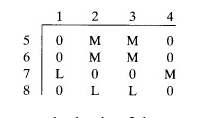TLS Online TPP Program
More Questions
TLS Online TPP Program
#Question id: 17076
#XL - R Botany
The various advantages of serum-free media could be
1. Improved reproducibility of results from different laboratories
2. Easier downstream processing of products from cultured cells
3. Biassays are free from interference due to serum proteins
4. They permit selective culture of diffrentiated cell types from the heterogeneous cultures
Which of the statements are true?
TLS Online TPP Program
#Question id: 17077
#XL - R Botany
Cells lacking Thymidine kinase if introduced into HAT medium which pathways will continue for nucleotide synthesis
TLS Online TPP Program
#Question id: 17078
#XL - R Botany
In HGPRT negative cells which pathway is blocked of nucleotide synthesis
TLS Online TPP Program
#Question id: 17079
#XL - R Botany
The major disadvantages of using serum in the culture medium could be
TLS Online TPP Program
#Question id: 17080
#XL - R Botany
Hypoxanthine and thymidine are required for running which pathway
TLS Online TPP Program
#Question id: 17081
#XL - R Botany
What type of drug is Aminopterin and what it is used for

